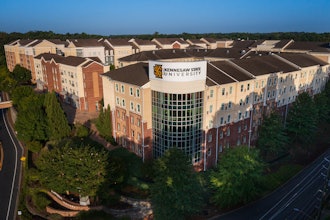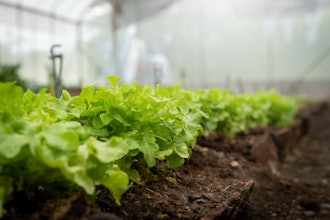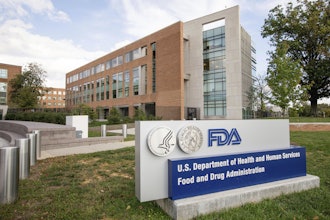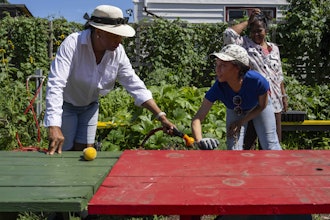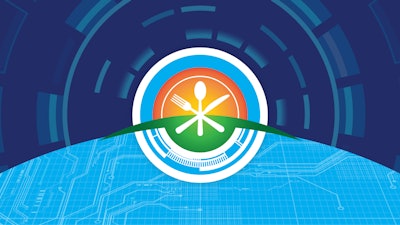
Statement on July 13 by FDA Commissioner Stephen M. Hahn, M.D.:
 Dr. Hahn
Dr. Hahn
In the months that have followed, it has become even clearer — from our experiences with the pandemic and the lessons we have been learning as part of the FDA's response to it — just how essential the actions outlined in this blueprint are and, if anything, that they are more important now, than ever.
Whatever theoretical or aspirational aspects there were to this blueprint before the pandemic, those have been propelled into concrete and essential action plans. I'll explain what I mean as I get into the details of just how we will be leveraging new technologies and approaches to create a more digital, transparent and safer food system.
I want to point out that food safety was high on my radar even before I'd come to the FDA. I'd heard about the New Era of Smarter Food Safety initiative and, upon arrived at the Agency, it was one of the first things I wanted to learn more about. That's in part because it seemed to align closely with the core values that have guided me in my work as a medical and public health professional: to apply the best medical science and most rigorous data to the work; to promote integrity and transparency; and to advance innovation and discovery.

These leaders highlighted the enormous opportunities we have to use cutting edge science and technology in support of our ability to help ensure the safety of the American public.
And they explained just how the New Era blueprint intends to do that, by incorporating input from external stakeholders in industry, our state partners, and multiple levels of experts within FDA's foods program.
Building on FSMA
The blueprint outlines a path forward that builds on the work the FDA has already done through implementation of the FDA Food Safety Modernization Act (FSMA).
As you know, FSMA has been a centerpiece of our work to help ensure food safety and prevent foodborne illnesses through the use of science and risk-based standards. The authority granted by FSMA enables a flexible framework that is adaptable to the changing food environment as science and technologies evolve.
The blueprint we release today represents the next stage in this process -- a commitment we are making to the American people that we will work as fast and effectively as we can, as fast and effectively as we can, to help ensure that we have the safest food system in the world.
And we'll do this in part by incorporating the use of the most modern technologies that are already in use in society and the business sector.
Some of this innovation is already creating a revolution in food production, supply, and delivery.
These developments offer great opportunity, but also pose many challenges, some of which are complicated by an increasingly complex global supply chain.
I want to note that while the New Era has a strong emphasis in the application of new technology, it's not just about technology. It's about using that technology to build and put in place more effective approaches and processes.

Enhanced Traceability
I'd like to spend a few minutes going over the core elements of the blueprint.
The first is tech-enabled traceability. This is one of those areas that we've learned during the pandemic has utility beyond our response to outbreaks of foodborne illness.
One of the challenges we've faced over the years is recurring outbreaks of illnesses associated with the consumption of certain foods. What this daunting problem underscores is the critical importance of the FDA working with industry so that we can rapidly trace a contaminated food to its source. And when I say rapidly, I mean minutes, not days, weeks, or even longer.
We want to explore ways to encourage companies to adopt tracing technologies and also to harmonize efforts to follow food from farm to table. We should strive to speak the same language, by espousing similar data standards across government and industry for tracking and tracing a food product.
During the pandemic we realized that widespread traceability provides greater supply chain visibility. This, in turn, can help the FDA and the food industry anticipate the kind of imbalances in the marketplace that led to temporary shortages of certain commodities and created food waste when producers lost customers because restaurants, schools, and other sites temporarily closed.
In addition, enhanced traceability, coupled with advanced analytical tools, could help us spot potential problems in advance and help us prevent or lessen their impact.
Smarter Tools and Approaches for Prevention and Outbreak Response
A second core element of the blueprint involves our ability to draw on the power of new data streams.
One of our most important resources we have today lies in our ability to unleash the power of data. We intend to do everything we can to attain better quality data, conduct a more meaningful analysis of it, and to transform streams of data into more meaningful, strategic, and prevention-oriented actions.
The plans embraced by the blueprint include strengthening our procedures and protocols for conducting the root cause analyses that can identify how a food became contaminated and inform our understanding of how to help prevent that from happening again.
The need for greater traceability and predictive analytics can be seen in our most recent efforts to improve the safety of romaine lettuce and other leafy greens, which have too often been implicated in outbreaks of Shiga-toxin producing E. coli (STEC) infections.
The repeat nature of these outbreaks illustrates the importance of achieving end-to-end traceability and of maximizing the effectiveness of root cause analyses.
Another example of the kinds of new tools we're developing for prevention can be seen in a pilot program we're conducting that will leverage artificial intelligence (AI) and machine learning to strengthen the agency's review of imported foods at ports of entry to help ensure that they meet U.S. food safety standards.
A proof of concept application of AI and machine learning models to historical shipment data indicates that we can expect very promising results from this pilot.
Imagine having a tool that expedites the clearance of legitimate, compliant shipments and improves by 300 percent our ability to know which shipping container to examine because that container is more likely to have violative products. It would save an immense amount of time, and potentially lives.
New Business Models and Retail Modernization
We're also taking a look at new business models for the production and delivery of food.
In recent years, groceries and meals have increasingly been ordered online and delivered directly to our homes. In the past few months, however, as consumers have heeded stay-at-home recommendations and ordered their food online from restaurants and supermarkets, this trend has skyrocketed.
We must help ensure that as these foods travel to our front doors, they continue to be safe for consumers. That concept is important at any time, but COVID-19 has accelerated the need to establish best practices and an industry standard of care in this area.
New business models include novel ways of producing foods and ingredients, such as cell-cultured food products, and we plan to take a close look at these. We intend to ensure that as food technology evolves, our oversight evolves along with it, to help ensure food safety.
As we look at these business models of the future, we will also be working to help modernize food safety at restaurants and other retail food outlets, which are one of the more frequently cited locations associated with outbreaks of foodborne illness.
FDA research shows the importance of supporting practices in retail establishments known to reduce the risk of food contamination, such as proper handwashing and storing foods at the right temperature. We're committed to exploring new approaches of food safety that go beyond traditional training and inspection.
Many restaurants and other retail outlets have had to temporarily close or change the way they do business during the pandemic. As they start back up and get their bearings, we intend to engage with the retail food industry and our partners in state government to help change practices, including a greater focus on how we motivate behavior changes by retail workers.
We'll also encourage and explore the use of new digital tools that will support food safety practices.
A New Culture of Food Safety
Finally, the blueprint involves a focus on fostering the growth of and strengthening the food safety culture on farms and in food facilities all over the world.
The importance of having a safety culture is something very familiar to me as the administrator of a medical center, as this is a central tenet in efforts to protect hospital patients.
The pandemic has given us a new perspective on what we mean by food safety culture.
We still believe that to make dramatic reductions foodborne disease we must do more to influence and change human behavior, as well as to address how employees think about food safety, and how they demonstrate their commitment to this as part of their jobs.
But a strong culture of food safety involves more than this. It's also about keeping those food workers safe and about educating consumers, who are cooking more at home these days, on safe food handling practices.
We're not just encouraging the food industry to make changes; we're looking within our ranks to see how we can approach these issues differently to better support and advance each of these priority areas.
Tapestry of Wisdom
When I asked Deputy Commissioner Yiannas early on in my tenure about how this blueprint first began to come together, I was impressed to learn that literally hundreds of people were directly involved in its creation.
Not only did the FDA's leadership work closely on this; their staffs participated in a series of brainstorming sessions on how to make the New Era a reality.
They also held a public meeting in which more than 1,500 stakeholders participated or submitted comments via the Federal Register.
This broad input, representing the expertise of food safety experts, the food industry, tech companies, and public health officials from all over the world, led to the development of short- and long-term strategies that we will continue to explore and seek to execute over the next decade.
As I hope you can grasp, I am very excited about the New Era of Smarter Food Safety, the potential it offers, and I look forward to helping advance it to the next stages.
I know that my colleagues at the FDA will be working as quickly and efficiently as possible, and I call on the food industry to do the same. As this work goes forward, we want to hear from you, to ensure that this process remains transparent and collaborative.
That is why we plan to keep you posted on our plans and progress. And, right now, I want to give you two ways you can easily do this.
Please visit, www.fda.gov/smarterfoodsafety and click on the link for e-mail updates. This will ensure that you don't miss any developments as we move forward.
Even more important, I encourage you to go online and read the entire blueprint. And please read it with the understanding that it is a work in progress that requires your input.
As I mentioned at the outset, we know from our experience during the pandemic that the blueprint involves ideas whose time has come. Implementing them will strengthen our ability to protect the food supply in good times and bad. And it will allow us to change as our world changes and the challenges and opportunities of food technology evolve.
But with all this change, I want to assure you that there's one thing that will remain consistent and unchanged, and that's our steadfast commitment to protect the American public.
We look forward to working with all of you to achieve that important goal.











